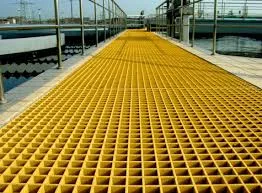
-
 Afrikaans
Afrikaans -
 Albanian
Albanian -
 Amharic
Amharic -
 Arabic
Arabic -
 Armenian
Armenian -
 Azerbaijani
Azerbaijani -
 Basque
Basque -
 Belarusian
Belarusian -
 Bengali
Bengali -
 Bosnian
Bosnian -
 Bulgarian
Bulgarian -
 Catalan
Catalan -
 Cebuano
Cebuano -
 China
China -
 China (Taiwan)
China (Taiwan) -
 Corsican
Corsican -
 Croatian
Croatian -
 Czech
Czech -
 Danish
Danish -
 Dutch
Dutch -
 English
English -
 Esperanto
Esperanto -
 Estonian
Estonian -
 Finnish
Finnish -
 French
French -
 Frisian
Frisian -
 Galician
Galician -
 Georgian
Georgian -
 German
German -
 Greek
Greek -
 Gujarati
Gujarati -
 Haitian Creole
Haitian Creole -
 hausa
hausa -
 hawaiian
hawaiian -
 Hebrew
Hebrew -
 Hindi
Hindi -
 Miao
Miao -
 Hungarian
Hungarian -
 Icelandic
Icelandic -
 igbo
igbo -
 Indonesian
Indonesian -
 irish
irish -
 Italian
Italian -
 Japanese
Japanese -
 Javanese
Javanese -
 Kannada
Kannada -
 kazakh
kazakh -
 Khmer
Khmer -
 Rwandese
Rwandese -
 Korean
Korean -
 Kurdish
Kurdish -
 Kyrgyz
Kyrgyz -
 Lao
Lao -
 Latin
Latin -
 Latvian
Latvian -
 Lithuanian
Lithuanian -
 Luxembourgish
Luxembourgish -
 Macedonian
Macedonian -
 Malgashi
Malgashi -
 Malay
Malay -
 Malayalam
Malayalam -
 Maltese
Maltese -
 Maori
Maori -
 Marathi
Marathi -
 Mongolian
Mongolian -
 Myanmar
Myanmar -
 Nepali
Nepali -
 Norwegian
Norwegian -
 Norwegian
Norwegian -
 Occitan
Occitan -
 Pashto
Pashto -
 Persian
Persian -
 Polish
Polish -
 Portuguese
Portuguese -
 Punjabi
Punjabi -
 Romanian
Romanian -
 Russian
Russian -
 Samoan
Samoan -
 Scottish Gaelic
Scottish Gaelic -
 Serbian
Serbian -
 Sesotho
Sesotho -
 Shona
Shona -
 Sindhi
Sindhi -
 Sinhala
Sinhala -
 Slovak
Slovak -
 Slovenian
Slovenian -
 Somali
Somali -
 Spanish
Spanish -
 Sundanese
Sundanese -
 Swahili
Swahili -
 Swedish
Swedish -
 Tagalog
Tagalog -
 Tajik
Tajik -
 Tamil
Tamil -
 Tatar
Tatar -
 Telugu
Telugu -
 Thai
Thai -
 Turkish
Turkish -
 Turkmen
Turkmen -
 Ukrainian
Ukrainian -
 Urdu
Urdu -
 Uighur
Uighur -
 Uzbek
Uzbek -
 Vietnamese
Vietnamese -
 Welsh
Welsh -
 Bantu
Bantu -
 Yiddish
Yiddish -
 Yoruba
Yoruba -
 Zulu
Zulu
1. frp flange blind
Understanding FRP Flange Blinds A Comprehensive Overview
In the industrial sector, the efficiency and safety of piping systems are critical. Among the essential components used in these systems are flange blinds, and specifically, those made from Fiber Reinforced Polymer (FRP). These innovative products have transformed traditional practices, providing substantial benefits across various applications.
What is an FRP Flange Blind?
An FRP flange blind is a type of blind flange that is specifically designed to close the ends of piping systems, effectively sealing sections of a pipeline. A flange, in this context, refers to a flat piece of material with holes around its perimeter, allowing it to be bolted to another flange to create a secure seal. The “blind” feature signifies that this flange is designed without a bore, making it suitable for applications where a complete seal is necessary, thus preventing any flow through the pipe.
Why Choose Fiber Reinforced Polymer?
Fiber Reinforced Polymer is a composite material made by combining a polymer matrix with fibrous materials, providing enhanced mechanical properties, chemical resistance, and lightweight characteristics. Here are several compelling reasons to choose FRP flange blinds
1. Corrosion Resistance One of the most significant advantages of using FRP is its remarkable resistance to corrosion. Traditional metal flanges often succumb to rust and other forms of degradation when exposed to harsh chemicals or environmental conditions. FRP’s resistance extends the longevity of the component, reducing maintenance costs and downtime.
2. Lightweight Nature FRP materials are considerably lighter than metals, making them easier to handle and install. This can significantly reduce labor costs and improve overall efficiency in installation procedures.
1. frp flange blind

3. Design Flexibility FRP can be molded into various shapes and sizes, allowing for customized solutions tailored to specific application requirements. This is particularly beneficial in scenarios where standard blind flanges might not fit or function appropriately.
4. Thermal Insulation Unlike metals, which conduct heat and may pose risks in high-temperature settings, FRP provides good thermal insulation properties, enhancing the safety and integrity of the piping system.
5. Economic Efficiency While the initial cost of FRP products may be higher than traditional materials, the long-term savings on maintenance and replacements, combined with their durability, make them a cost-effective choice in the long run.
Applications of FRP Flange Blinds
FRP flange blinds are employed across various industries, including chemical processing, water treatment, oil and gas, and pharmaceuticals. Their versatility is evident in
- Chemical Plants Protecting systems from corrosive materials while maintaining structural integrity. - Water Treatment Facilities Providing durable, long-lasting solutions that withstand harsh environments. - Oil and Gas Offering reliable sealing for pipelines that transport various substances, ensuring safety and compliance with industry regulations.
Conclusion
In conclusion, FRP flange blinds represent a significant advancement in the design and functionality of piping systems. Their unique properties provide essential benefits that enhance efficiency, safety, and cost-effectiveness in various industrial applications. As industries continue to seek durable and reliable components to improve their operations, FRP flange blinds stand out as a formidable choice. By embracing this innovative technology, businesses can ensure the longevity and integrity of their piping systems while minimizing the risk of failure or maintenance interruptions. As the industry evolves, FRP flange blinds will undoubtedly play a pivotal role in shaping the future of pipeline management.
Latest news
-
Exploring the Benefits of Top Hammer Drifter Rods for Enhanced Drilling PerformanceNewsJun.10,2025
-
High-Precision Fiberglass Winding Machine for GRP/FRP Pipe Production – Reliable & Efficient SolutionsNewsJun.10,2025
-
FRP Pipes & Fittings for Shipbuilding - Corrosion-Resistant & LightweightNewsJun.09,2025
-
Premium FRP Flooring Solutions Durable & Slip-ResistantNewsJun.09,2025
-
Premium Fiberglass Rectangular Tanks Durable & Lightweight SolutionNewsJun.09,2025
-
Tapered Drill String Design Guide Durable Performance & UsesNewsJun.09,2025









